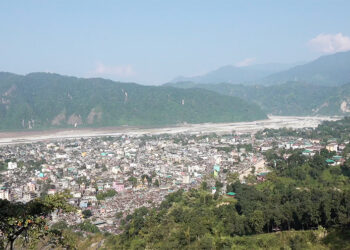
For years, a cotton farmers’ group in Pema Gatshel has struggled without a proper processing unit after their makeshift hut was destroyed. But now, with support from the Royal Textile Academy, the group has a new centre, bringing renewed hope to its members.
The centre will help improve the quality of cotton yarn and boost the interest of group members.
With this new facility, members said they are motivated to work harder and more efficiently.
Tashi Choden, the chairperson of the group said, “We are happy, because we now have a new centre with support from the Royal Textile Academy. We will begin our work now. We promise to meet the demands of our customers from here on.”
Ugyen Seldon, a member said, “Now that our centre is ready, we are very happy. Many members are showing interest to start the processing works. It will be convenient.”
The group had been using a makeshift hut for over two years, from 2021 to 2023.
Due to budget constraints, they could not repair it, leaving their machines unused until today.
Despite this, the members continued processing cotton manually in their homes, though it was difficult and time-consuming.

Ugyen Seldon added that, “Our old unit was just a hut. During carding, we faced many problems as the place was dusty. The hut could only accommodate a few members, so most of us had to work outside under the sun. Many members started losing interest.”
Likewise, Tashi Choden said, “The hut, which was built from the savings of five members, was destroyed, and we could not use the processing machine. For two years, we failed to supply our products on time, and we still have unsold cotton in stock.”
The Royal Textile Academy built the new centre with a budget of over Nu 1.8 M with technical support from the district and gewog administrations.
The Royal Textile Academy, a civil society organisation under the patronage of Her Majesty Gyalyum Sangay Choden Wangchuck, continues to play a vital role in preserving and promoting Bhutan’s textile heritage.
The 19-member group now look forward to producing better quality yarn, reviving interest among members, and keeping the tradition of cotton weaving alive for years to come.
Thinley Dorji, Pema Gatshel
Edited by Tshering Zam








